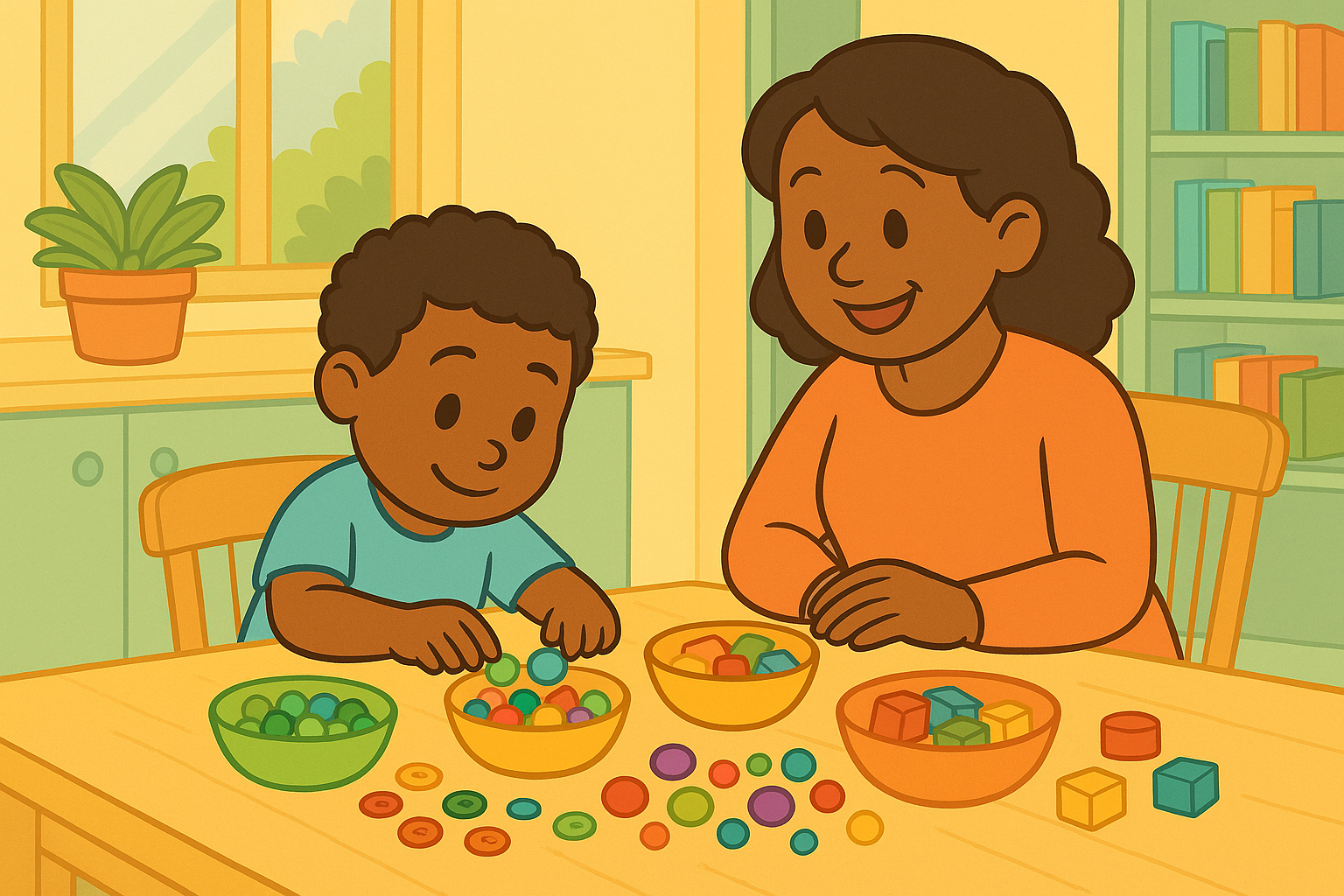Teaching Kids to Compare, Sort, and Classify
Teaching Kids to Compare, Sort, and Classify
Why Comparison, Sorting, and Classification Matter
Before children can read graphs, solve math problems, or follow scientific procedures, they need a solid foundation in:
noticing similarities and differences
grouping items intentionally
explaining why things belong together
describing attributes
These skills:
boost vocabulary,
strengthen cognitive flexibility,
support early logic,
lay groundwork for STEM learning.
Sorting isn’t just organizing — it’s thinking.
Step 1: Start With What Kids Already Notice
Children naturally observe:
colors,
shapes,
sizes,
textures.
Instead of correcting them, spotlight curiosity:
“You put all the red cars together — I wonder why!”
Labeling their thinking builds confidence.
Step 2: Use Language That Signals Comparison
Introduce words like:
bigger
smaller
longer
shorter
taller
heavier
lighter
These become mental tools later for math and measurement.
Try:
“Which tower is taller?”
“Which cup holds more water?”
(Try this too: Teaching Science Through Sensory Exploration)
Step 3: Start With Two Simple Attributes
Early sorting works best when kids focus on:
one thing at a time.
Example attributes:
color,
shape,
size,
category (animals vs. vehicles).
As skills grow, layer attributes:
“Sort by color and size.”
That’s early logic!
Step 4: Offer Open-Ended Materials to Sort
Easy options:
buttons,
pom-poms,
loose blocks,
toy animals,
leaves,
bottle caps.
When objects vary, children naturally look for attributes.
Step 5: Invite Children to Explain Their Grouping
Asking questions builds vocabulary and reasoning:
“How did you decide to sort them like that?”
“Tell me about this group.”
Encouraging explanation deepens conceptual understanding.
(Related read: Helping Kids Retell Events in Order)
Step 6: Play Comparison Games
Try:
“Which is heavier?”
“Which is longer?”
“Which one isn’t like the others?”
Add movement:
“Stand next to something taller than you.”
Physical comparison creates memorable learning.
Step 7: Sort With Everyday Routines
Sorting isn’t just a math activity — it’s life.
At home, sort:
laundry (socks vs. shirts)
snacks (crunchy vs. soft)
toy bins (animals vs. vehicles)
crayons (warm vs. cool colors)
When kids sort intentionally, organization makes sense.
(Try this too: How to Build Attention Span Through Predictable Structure)
Step 8: Practice Classification Through Play Stories
Add narrative:
“All the zoo animals go here — but the farm animals sleep over there.”
Story-based classification strengthens memory and social understanding.
Step 9: Use Books as Sorting Inspiration
After reading, ask:
“Which characters are animals?”
“Who lives in the ocean vs. land?”
“Which foods were healthy?”
Books offer safe classification practice.
(Related read: Using Picture Books to Teach New Concepts)
Step 10: Celebrate Flexible Thinking
Sometimes children sort in surprising ways:
by emotion (“These are the happy animals!”)
by pattern (“These have stripes”)
Celebrate it.
Flexible thinkers become:
creative writers,
collaborative problem solvers,
empathetic peers.
What NOT to Do (Gently)
Avoid:
🚫 correcting their categories instantly
🚫 forcing your logic
🚫 rushing through activities
Children need time to explore their thinking structure.
Instead try:
“Tell me more about this group!”
Validation matters more than accuracy.
Challenge Ideas for Growing Brains
As skills strengthen, try:
sorting by sound (animals that roar vs. squeak)
sorting by texture
creating sub-groups
spotting intruders (“Which doesn’t belong?”)
Each layer builds deeper reasoning.
When Kids Struggle (Totally Normal)
Offer scaffolds:
fewer items,
clear attributes,
visual examples.
Reduce complexity until confidence returns.
How Sorting Supports School Readiness
Sorting and classifying support:
✔ early math operations
✔ reading categories (fiction vs. nonfiction)
✔ science concepts (habitats, properties)
✔ executive function
✔ attention to detail
It’s foundational across subjects.
Bringing It All Together
Comparing, sorting, and classifying teach children to:
✔ observe carefully
✔ analyze thoughtfully
✔ communicate reasoning
✔ solve problems
✔ understand patterns
And it all happens through playful, hands-on learning.
Your invitation to classify unlocks their critical thinking voice.
Fuzzigram’s Favorite Sorting & Comparing Activities
✅ “Which doesn’t belong?” card game
✅ Snack sorting (crunchy vs. chewy)
✅ Shoe lineup (biggest → smallest)
✅ Texture tray (soft vs. rough)
✅ Nature bag sorting (leaves, rocks, sticks)
This content is for educational purposes and is not a substitute for professional medical or psychological advice.
Popular Parenting Articles




